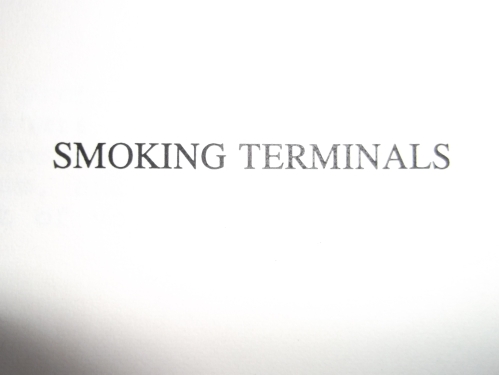Part 2 of the report on the 2013 National Acquisitions Group Conference in York (the papers are available here to members – http://www.nag.org.uk/events/2013/07/nag-conference-2013/)
Adopting RDA by Stuart Hunt was an updated version of a paper I’d heard previously at other events, adapted for non-specialist cataloguers. The key points were that going live with RDA would be a sequence of events for most libraries, with many of the timings being dictated by the timetables of external record sources and suppliers. Other significant issues would be how to manage unavoidable hybridity and data in multiple environments (“classic catalogues”, discovery layers).
RFID Update: Mick Fortune surveyed “the evolving RFID landscape”, concentrating on new applications, new concerns and new standards. Using RFID only for access control, membership smartcards and security (as most libraries in the UK currently are) was, he said, “Like buying a smartphone and using it to make calls”. Development has been inhibited by being driven by RFID suppliers, not libraries, a lack of involvement from LMS suppliers and a lack of agreed standards for data or frequencies.
New applications in development worldwide include stock management, supply chain monitoring and mobile apps that interact with stock. Cooperative working has, though, promoted the adoption of common standards. For instance, a UK initiative – LCF (Library Communication Framework) (version 1 published in September) – aims to standardise exchange between LMS, RFID and third party apps.
Privacy continues to be a concern (Libraries will be obliged to complete PIAs in 2014) as does the discovery that RFID tags are potentially vulnerable to alteration by smartphones.
BIC, UKSLC and Accreditation by Simon Edwards explained the history, structure and role of BIC (for those who weren’t aware of it): jointly set up by CILIP, the BL, the Booksellers’ and Publishers’ Associations, it works to establish shared standards among all those incolved in the supply chain. He also outlined the Accreditation process (which we at the City have achieved) and introduced UKSLC (UK Standard Library Categories). Formerly known as eLibraries, these are versions of the BIC subject categories adapted to organise the stock in libraries and provide subject access, though Edwards stressed that “they are not a substitute for Dewey“. Most cataloguers would be surprised by the assertion that “patrons have changed because of the internet” in that they now want to “search by subject” (is there anything new about this?) and it wasn’t clear to me what he envisaged the relationship between UKSLC and classification should be.
David Stoker, in a heavily visual presentation, described the lengthy and challenging process of renovating the Liverpool Central Library and the PFI initiative that financed it. The new library is an undeniably impressive achievement and has apparently proved hugely popular with its users. This promotional video gives as idea of what it is like …
Lastly Ben Showers introduced the National Monographs Strategy initiative from JISC, designed to answer the question “should libraries be collecting the same books as each other?” Presumably the implied answer is “no” and the question is being asked in the context of potentially replacing physical collections by space-saving e-resources rather than simply a revival of co-operative purchasing schemes such as the old MSC.
The co-design pilot project is running for six months and is due to end in December 2013. Showers explained that is based on the principles of “thinking in the open“, being “evidence based” and “community-led” and “iteration not repetition”. Involvement from all interested parties (potentially all libraries with any kind of research function) is actively encouraged via their blog, which is intended to be the main focus for the project and is here … http://bit.ly/monographsuk . So do have a look and feel free to contribute!
The titles of these conferences do tend to be designed to attract attention by snagging on contemporary concerns, rather than providing a coherent theme. “Sharing today, securing tomorrow” would, perhaps, suggest one thing to a public librarian (in the context of “shared services”) and it was interesting to be reminded of the different meanings that it might have in an academic or research context.
If there was a thread through these apparently disparate papers it might have been the question of how to foster sharing and co-operation in the absence of the kind of centralised, top-down governmental intervention represented by the Public Library Standards (and, I suppose, the national library websites for Scotland and Wales). Ben Showers’ community-led and crowdsourced approach certainly offers a theoretical alternative, and it will be interesting to follow its progress.



